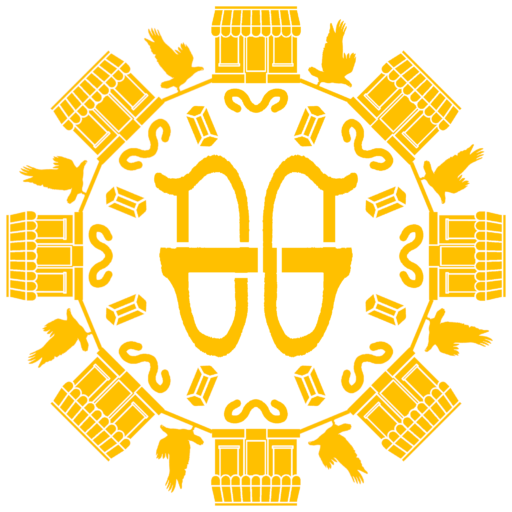This review is incredibly important. A linguist dubbed the \”forgotten Tolkien\” bestowed this novel to the RPG community. Muhammad Abdul-Rahman Barker created the Tekumel world during the mid-1970\’s. It became part of the role-playing gaming community for a long time and is still around.
Plot
Harsan initiates as a priest, though there are greater machinations. The plot revolves around finding a lost treasure inscribed in a forgotten language that only Harsan is able to understand. There is a lot of adventure, such as intrigue and narrow escapes through corridors and labyrinths.
There is an abrupt interruption in the middle of the novel with the introduction of a physician. At that point, I thought that she was going to be the new protagonist, though it was not the case.
I could not get a clear picture of where exactly the plot was directing until 220 pages into the book. Within there, I began to understand the civil war among the princes and various heirs of the Bednalljan god-emperor. I also understood the reason for the Harsan\’s presence in the plot. That slow pace would not be a problem if the book was longer than 350 pages, though it was not. Even then, I was still pretty lost.
Themes
Definitely, the world-building is worth discussing. It is very unique compared to various other legendariums which tend to be Eurocentric. While there is increasing awareness of fantasy in other parts of the world, it is important to note that Barker based Tekumel off the Middle-Eastern, Indian, Urdu, and Mayan nations. To anyone who does not live in any of their respective areas may feel overwhelmed by the subtle nods, though the world-building is worth exploring.
As for both the human and non-human races in this world, there are various types which do not just include humans. There are also insectoid peoples referred to as the Pe Choi, among many other races which figure within Tekumel. Only the humans seem to be able to retain power while also marginalizing the other races.
A major theme within the framework of Tekumel society is the clanhouse, which is where any individual\’s identity is based upon. Since Harsan was an orphan, he has no surname, which did not create a strong tension between acceptance and integrity. He becomes tempted with these offers. While it would create the alluring dynamic between the protagonist and the villains, it no longer finds itself throughout most of the story.
As for the structure of the society, there is no strict definers (of course the ruling class and the rest of society are differentiated). The priesthood and the slaves are able to find families and while the underground city does have an untouchable caste, there are former nobles among them.
Within the religious framework of the Tekumel society, there is the concept of the Skein, which are threads which determine the course of an individual\’s life. This exactly parallels the Sisters of Fate from Greek mythology and the Norns from Norse mythology. It definitely fit within the world considering how Harsan\’s own existence would put that concept to question.
Characters
At the beginning, Harsan does have a degree of humanity for the readers\’ pathos, since he was orphaned and raised by the Pe Choi; and he eventually joins a priesthood. Of course, he is thrust into misadventures due to the politics of the world around him. Throughout the novel, while he does bemoan the fact that he would wish to lead a secluded life, there is not much depth to his character.
Between Harsan and Eyil, I did not feel that intimacy between them, at least not as strong as it appears. That also appears that way with Tlayesha as well. As for the group that assembles together, although they are of different races, they do not seem to have any real conflict that would provide realism to the story.
Writing Style
Of course, since the series takes place in a different world. Every reader should expect to encounter names and words formed from the conlangs. I thought that the presence of these conlangs was strong in this book, either with the names of the unique creatures or the titles to refer to someone, such as \”you of courteous alienness.\”
However they felt overwhelming throughout the book. They would not be bothersome if there was a glossary or any form of appendix that explained every aspect of Tekumel as succinctly as possible. That would include the info-dumping about the forgotten language Harsan is able to understand. It would have made the story more understandable if the appendix did include it.
There were plenty of adages and figures of speech spoken by the characters that definitely provided verisimilitude in the Tsolyanu Empire. This includes invocations of the many deities worshiped in the Empire and the Skein.
Rich description pervades of the stone for the construction of the structures as well as the creatures unique to Tekumel. This did provide realism since it helps to visualize the color and the surfaces of these buildings in order to help guide the reader through the story.
Fraying Fibers Of A Skein
Tekumel was originally the main focus for the role-playing game. So, clearly Man of Gold seemed to target those gamers themselves rather than everyone else. I will say that if anyone expresses interest, then I would not recommend this book for understanding the world. As much as I would like to see the Tekumel legendarium attain more relevance to the modern audience, I do think that this edition (at least) would not be suitable enough for them. Since the Tekumel Foundation provides secondary Tekumel material, it would be best to read them alongside this novel.
#
Barker, M. A. R. \”Man of Gold.\” Tekumel Foundation. 1984.
Image Attribution: Micky Milkyway
